This 2022 has been a year full of successes and great milestones for WOCU-Monitoring.
Its establishment as an independent company, consolidation as stable and mature software, its new brand identity and image, and the powerful functionalities developed throughout the year. All these factors contribute to clients’ continued trust in us as a benchmark in monitoring large infrastructures.
The Top 10 Features of the Year2022 ends and it’s time to look back and take stock.
How did we start the year and how do we finish it? What have we accumulated?

WOCU-Monitoring grows and evolves towards a clear goal: to continue providing suitable solutions for an increasing number of use cases. This is possible thanks to the powerful integrations and improvements developed by our great team, throughout the five versions published this year:
WOCU 53 Features WOCU 52 Features WOCU 51 Features WOCU 50 Features WOCU 49 FeaturesAnd in case you missed anything, we present the 10 most notable features and key milestones we launched during 2022.
- New Corporate Image
Every release is important, but in version 52, we unveiled the anticipated new brand image of WOCU-Monitoring.
A brand renewal strategy was executed, achieving a simple yet distinct design that encapsulates stability, control, and security that WOCU-Monitoring guarantees during the monitoring of infrastructures and involved sub-processes. This renewal strategy symbolizes the company’s transformation since it began operating as an independent brand in 2021.
Discover the story of WOCU-Monitoring in the following post.
- Infrastructure Monitoring Visualization
WOCU-Monitoring is a distributed monitoring solution that can grow according to a company’s needs. Therefore, in version 52, work was done to enable Administrators to see, at a glance, all the components that WOCU-Monitoring has deployed at the time of inquiry. Through the new Infrastructure panel, a total and correlated overview of the different parts constituting the monitored network infrastructure is provided.
The simplicity of this resource enhances the understanding and analysis of the current infrastructure situation, regardless of its size and complexity.
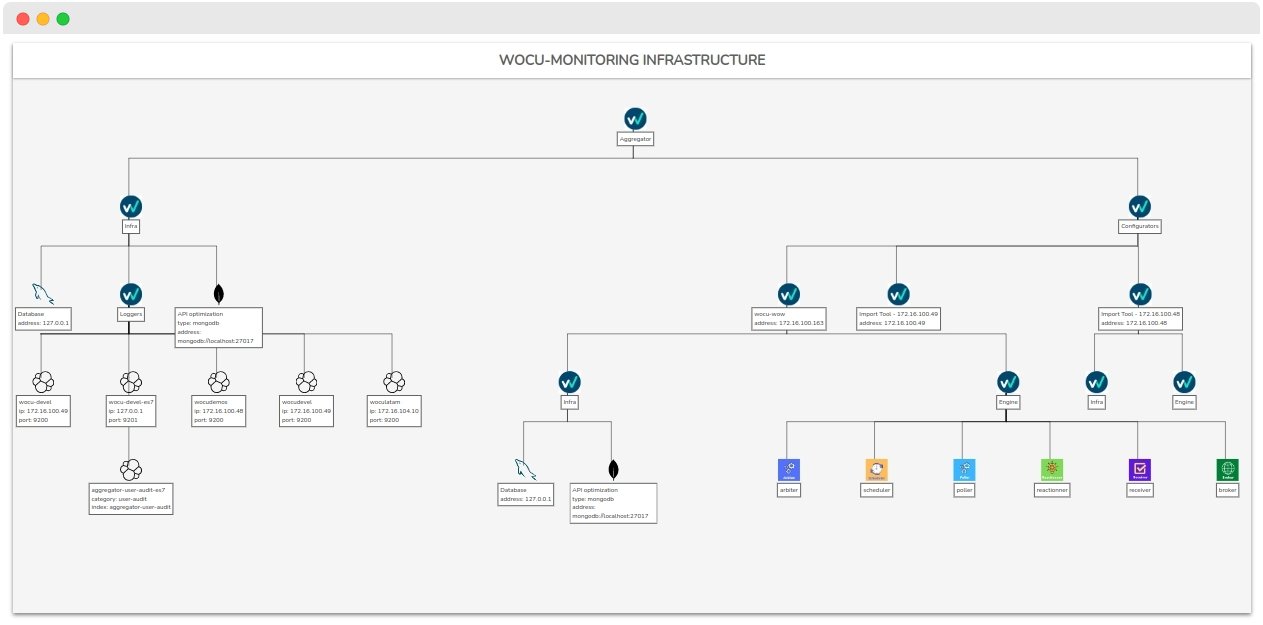
- IPv6 Device Monitoring
Another major challenge was the integration and adaptation of the IPv6 protocol for device monitoring in the recent version 53. WOCU-Monitoring is now capable of querying device availability and obtaining all types of metrics using this protocol.
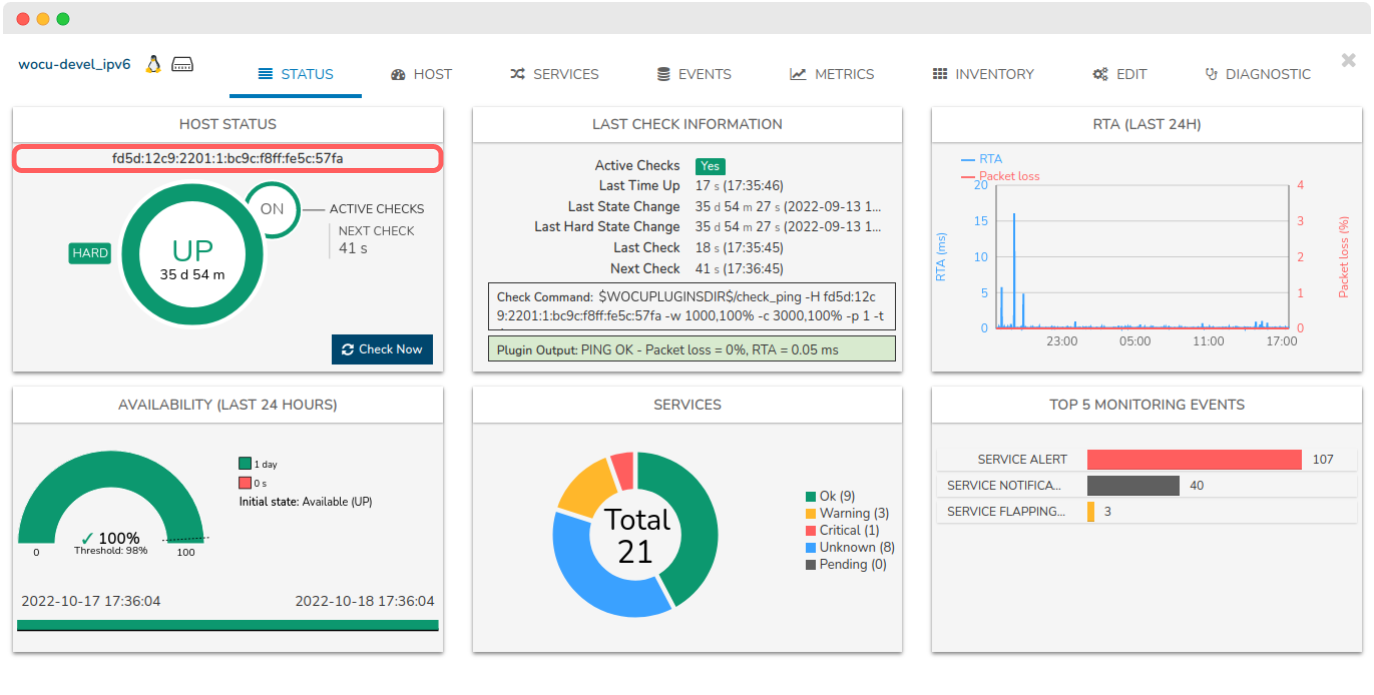
To achieve compatibility with IPv6, several development tasks were necessary. The graphical interface and configuration files of WOCU-Monitoring were adapted to support IPv6 addresses, and a significant effort was made to reprogram and patch the libraries and scripts used throughout the Monitoring Packs catalog.
Learn more about the implementation of the IPv6 protocol and its context in the following post. - SNMP Query Optimization (SNMP Booster)
In version 51, considerable effort was dedicated to optimizing SNMP queries, achieving a significant milestone scheduled in our 2022 Roadmap.
The base library for SNMP queries used by all monitoring packs written in Python was ported. The performance improvements are notable, and while dependent on the types of packs and queries performed in each implementation, in many cases, it reduces the load on machines by more than half.
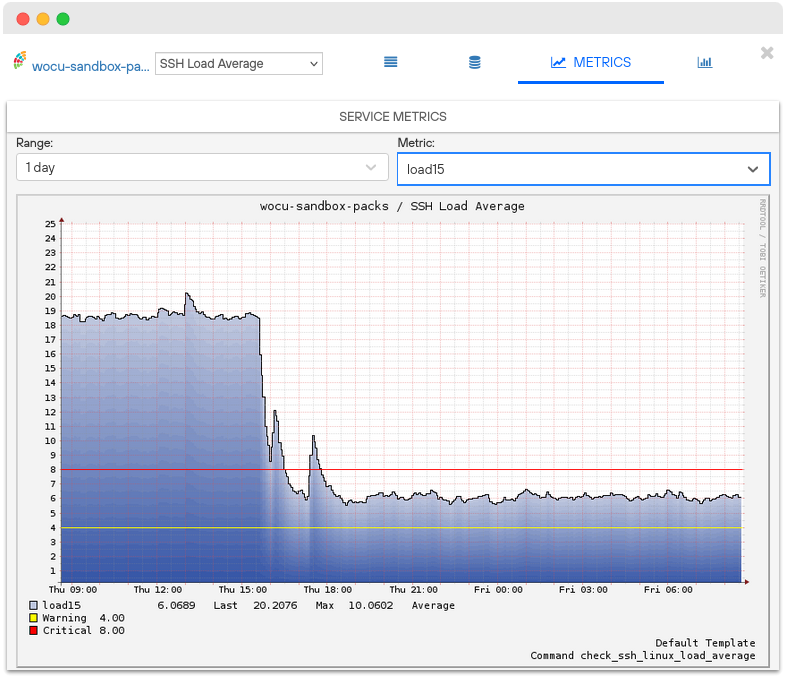
Reducing machine load means more devices can be monitored with the same hardware, also leading to quicker check executions, fewer queued jobs, and overall greater stability of the monitoring engine.
Additionally, large companies using WOCU-Monitoring to monitor their infrastructures will see a considerable savings in energy expenditure, contributing not only to environmental preservation but also to minimizing expenses and thereby maximizing their profits.
- Support for WOCU-Monitoring Installations on RedHat 8

As of version 53, RedHat 8 became one of the Linux distributions supported for WOCU-Monitoring installations, alongside Debian 10 and Ubuntu 20.04.
In December 2021, RedHat decided to discontinue support for the CentOS Linux operating system (EOL) and only maintain CentOS Stream. This change directly impacted WOCU-Monitoring as CentOS Linux was used as the base system for building installation packages in RedHat environments.
For this and other reasons, it was decided to use RedHat version 8 as the base system for building RPM packages, discontinuing support for version 7.
In summary, WOCU-Monitoring continues to support RPM packaging but moves away from CentOS Linux (EOL December 2021) and uses RedHat version 8.x stable by default, ensuring a more secure, robust, and reliable software.
- Permission Control and Authorization of Actions (UI-ACL)
In the latest released version, part of our effort was devoted to the control and granting of user permissions on available actions in the Configuration Module.
Although the solution already managed access permissions and privileges through ACL, it incorporated the ability to manage user privileges regarding the actions present in the mentioned module, providing greater flexibility and precision in deciding which content to show or hide from a set of users.
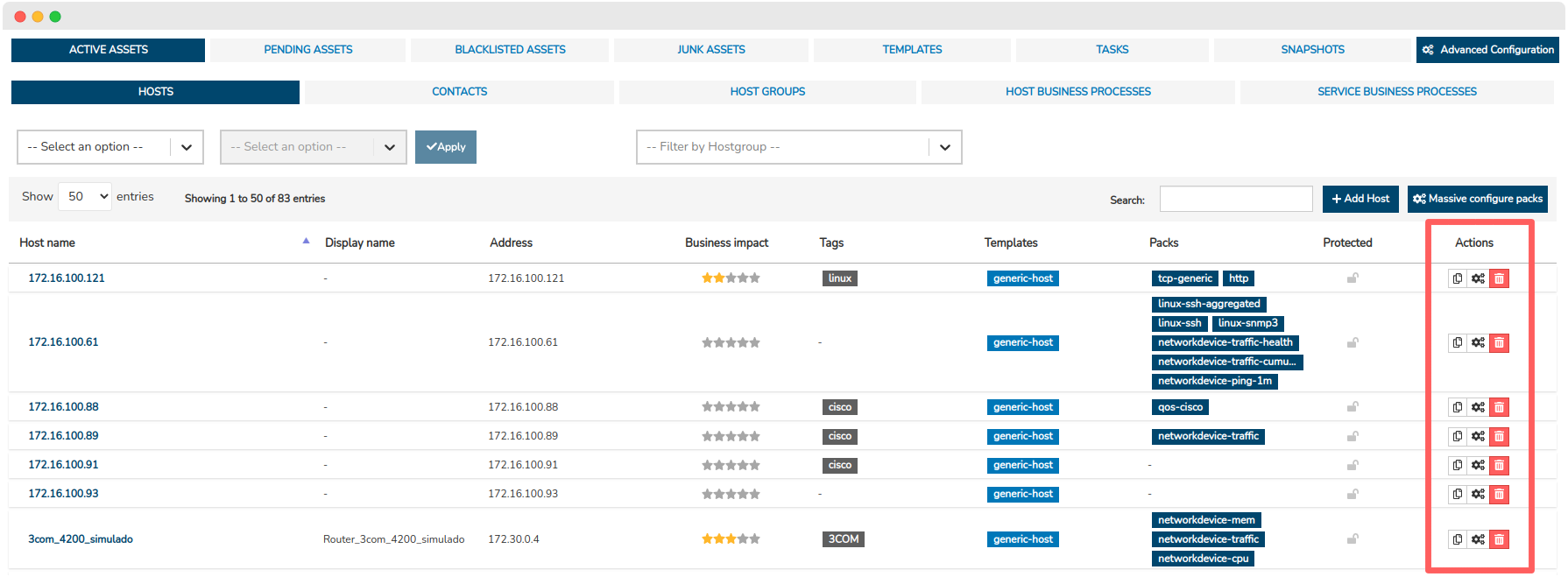 Image 1. Hosts section with all enabled actions: duplicate, configure packs, and delete.
Image 1. Hosts section with all enabled actions: duplicate, configure packs, and delete.
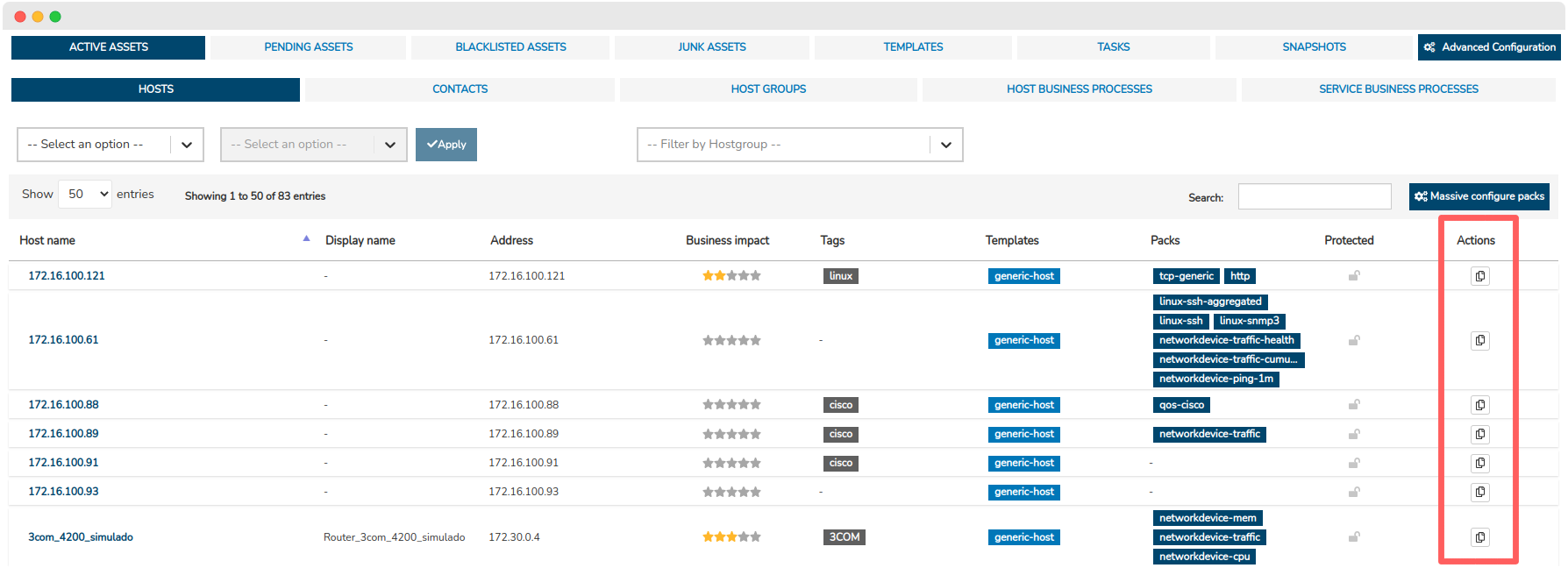 Image 2. Hosts section with certain disabled actions, only the duplicate action available.
Image 2. Hosts section with certain disabled actions, only the duplicate action available.
- Evolution of the Monitoring Services Management View
The Monitoring Services Inventory started 2022 in a BETA state and ended the year as a fully functional space. Throughout the different versions released this year, various components were integrated, facilitating in-depth analysis in terms of each associated Service’s availability and operability.
Some notable developments include:
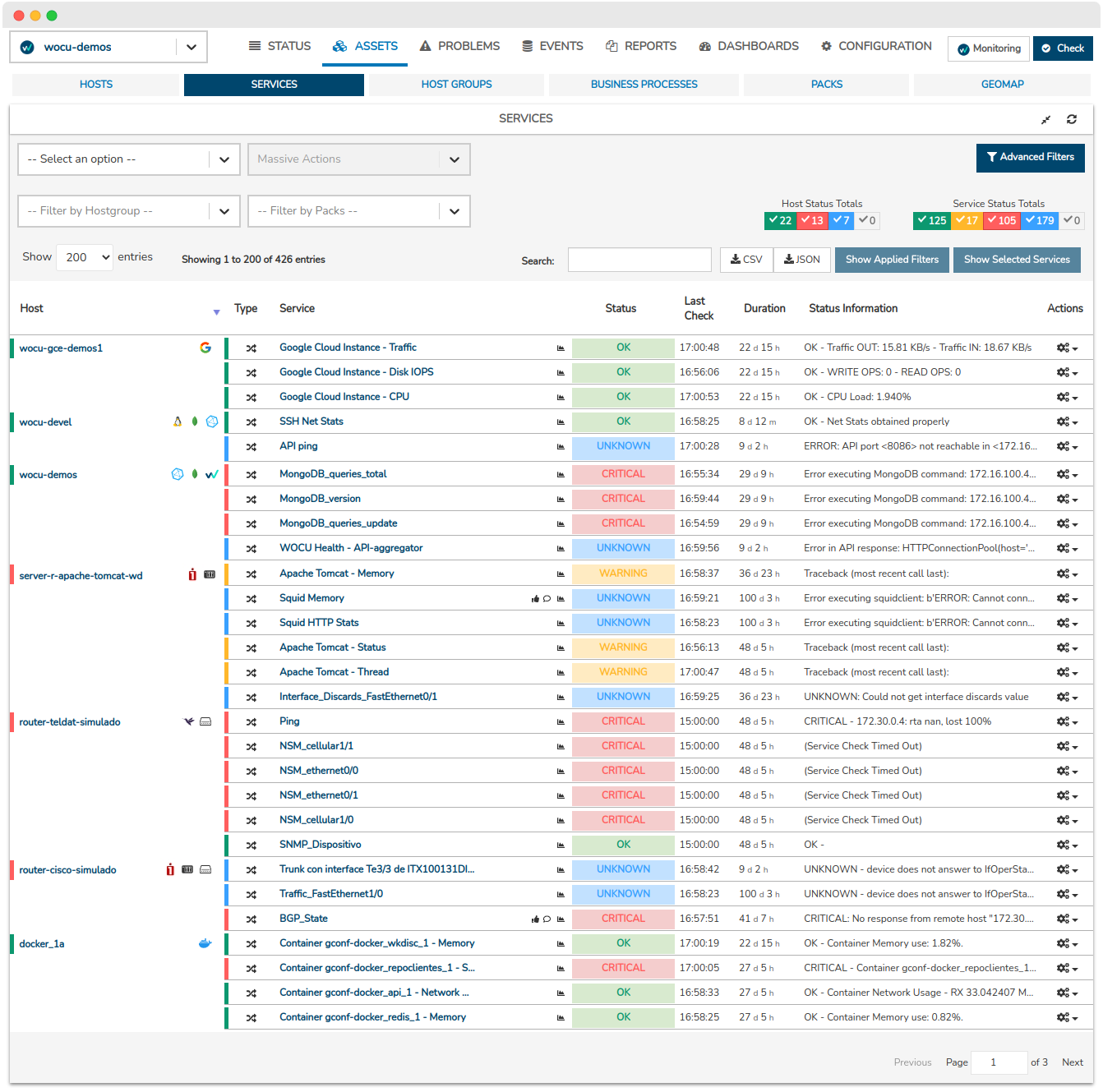
- Action Logging for Audit
We started the year by including in the version 49 the ability to log (record) all actions executed within the WOCU-Monitoring interface for future audits, among other actions.
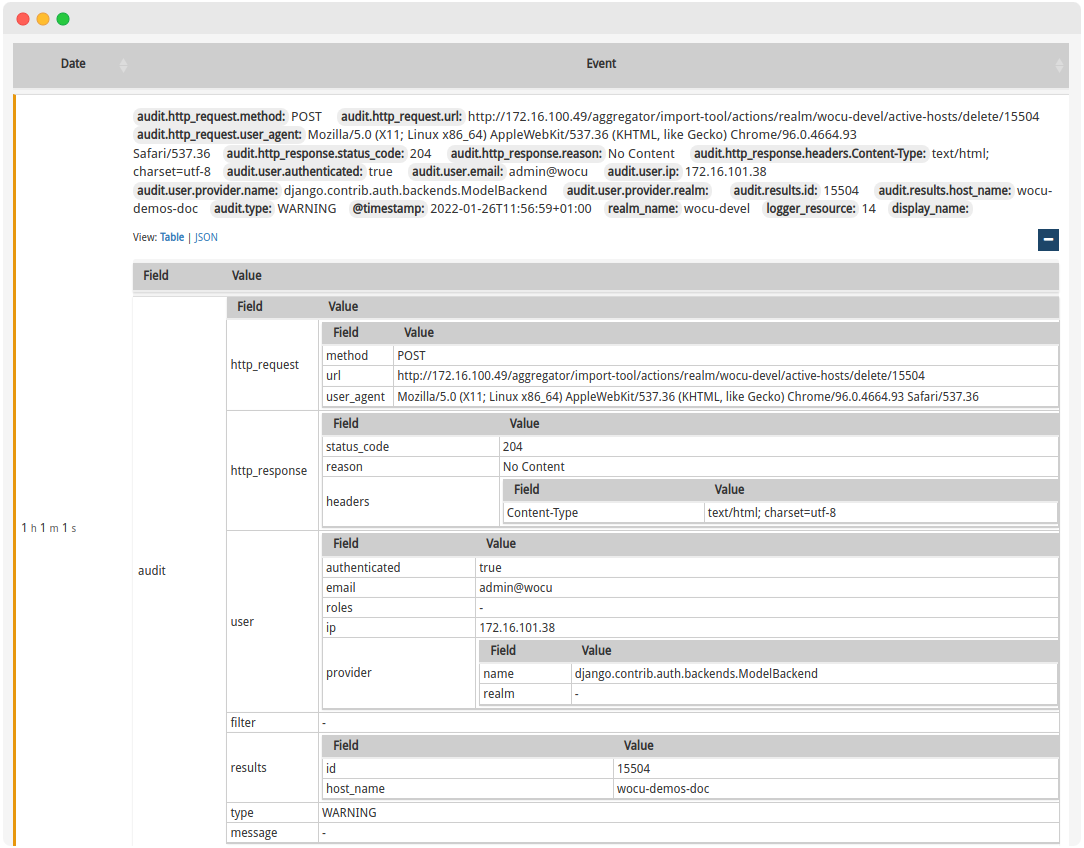
A complete trace contains detailed information about the action executed or changes tracked by the system, providing data such as:
The request made: HTTP method (GET, POST, etc.), API endpoint used, and browser The obtained response: HTTP code (e.g., 200 OK) and headers User who made the request Detailed information about the entity on which the action is performedThese events are collected by reading from the log file using the Events ingestion collector of WOCU-Monitoring and sent to the Logs backend to later audit the processed information.
- HTTPS Support for the Aggregator and Import-Tool
Support was also included for configuring the various Import-Tools according to the HTTPS protocol and their communication with the Aggregator.
As known, its development is linked to increasing the application’s security and an interaction with the user based on mutual trust, as data exchange occurs securely and controlled, without risk of interception by third parties.
Learn more about the process and configuration guidelines here.
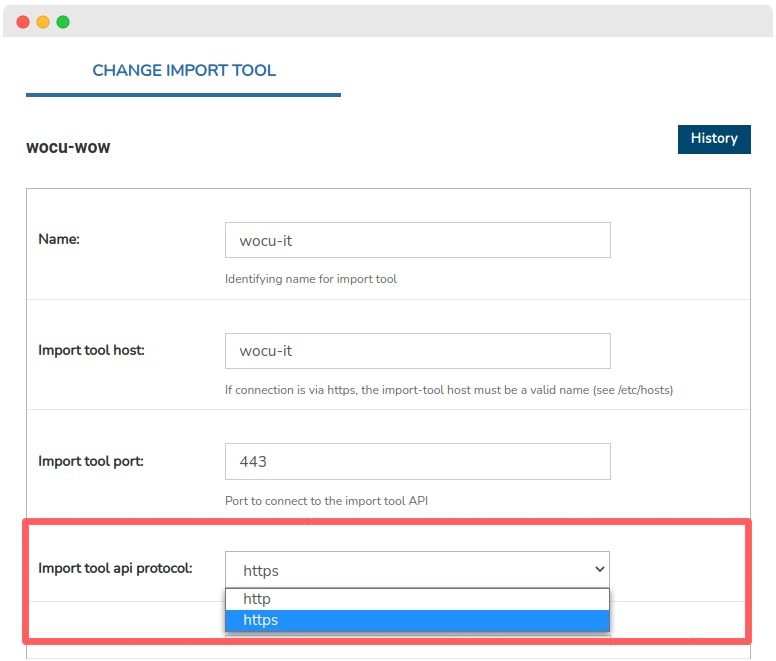
- Passive Monitoring of SNMP Traps
Another facet of WOCU-Monitoring that has evolved during 2022 is passive monitoring of SNMP traps. Specifically, a completely new infrastructure was developed to replace the current system based on Log Occurrences.
This new system allows us to receive a high volume of SNMP events reactively, without the need for periodic checks, making it a more efficient way of monitoring.
Additionally, emphasis was placed on facilitating user configuration of these new passive services, addressing one of the previous system’s shortcomings.

This new implementation is just the first step that lays the groundwork for continuing to strengthen Passive Monitoring within WOCU-Monitoring, allowing future versions to carry out passive monitoring of Events from other sources.
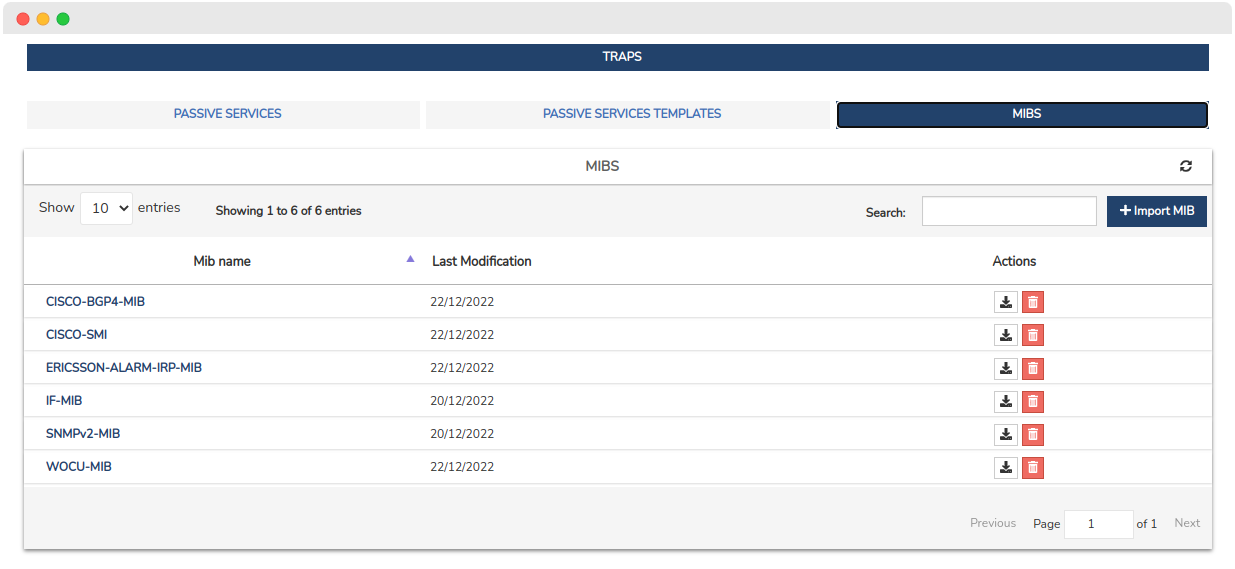 Request your demo today and discover how to take control of your infrastructure.
Request your demo today and discover how to take control of your infrastructure.




